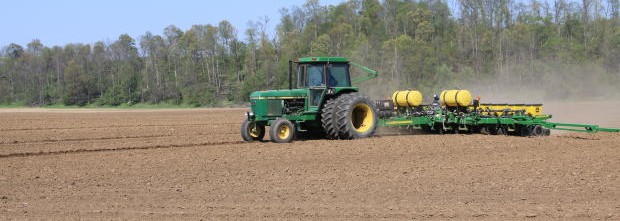
How do I make sure my farm vehicles are compliant and properly insured?
Posted by: Suzanne Lois, Agricultural Risk Advisor
A farmer’s definition of an “implement of husbandry” is often times NOT the same definition used by the State of Wisconsin to determine compliance under DOT law. There are four criteria that must be met for a vehicle to be considered an “implement of husbandry, and therefore be exempt from some of the DOT regulations in the State of Wisconsin. The four criteria are as follows:
1. A piece of machinery or equipment designed for agricultural purposes.
2. Used exclusively in the conduct of agricultural operations, and
3. Generally used off the highway
4. This does not include any truck, farm truck, road tractor, truck tractor, farm trailer, trailer-mounted bulk fertilizer tank (includes anhydrous ammonia tanks) or commercial motor vehicles
If a vehicle does not meet all four criteria it may not be driven on a public road by a non-licensed operator and must comply with DOT regulations. DOT regulations may include the following listed below, but are not exclusive to the list below. (You should check with the Wisconsin DOT for exact requirements)
1. Weight , width and length requirements
2. Federal intrastate and Interstate requirements
3. CDL licensing requirements
4. ATV’s licensing requirements
5. Non-farm persons ages 14-15 must have completed a Tractor Safety Course and received certification (non-farm persons under age of 14 CAN NOT operate farm machinery on or off road)
Most farmers are not required to possess a CDL license to drive a commercial motor vehicle, (CMV-vehicle with a gross vehicle weight rating of 26,001 or more pounds that is designed or used to transport property or passengers) if they meet the following criteria:
1. They are operating vehicles they own or lease (this does not include vehicles they rent for short periods of time)
2. They are transporting agricultural products, machinery, or supplies(including hazardous materials) to or from their farm(s)3. And they are operating within a 150 mile radius of their Wisconsin farm(s). The 150 mile radius includes neighboring states. Currently Wisconsin has agreements with Iowa, Michigan and Minnesota
Farmers are NOT exempt from CDL requirements if they do the following:
1. Haul for hire. This includes hauling for others even if no compensation is received
2. Hauling more than 16 passengers in a vehicle, wagon or trailer. (i.e. hay wagon rides are a good example of this)
3. Operating double or triple trailer vehicle combinations
4. Custom harvesters who are NOT farmers (if you have a separate business entity for custom harvesting of crops you are not exempt from the law)
Insurance companies generally view tractors as “implements of husbandry” and therefore schedule these tractors under your farm blanket personal property or specifically schedule these tractors. Semi tractors, tandem axle trucks, trailers, farm pickup trucks are required to be listed on the farm business auto policy to be covered properly for liability. The question comes in on those trucks that are primarily used on the farm premise only and only driven on the road to go from one farm location to another or for vehicles being taken in for service (some examples of these types of vehicles are: TMR mixers on truck chassis, trucks with forage boxes, ATV or UTV). Some insurance companies will allow you to schedule these on the farm blanket personal property, but with the understanding that once they leave the premise (driveway) there is no longer any coverage for liability.
Most insurance companies are NOT allowing you to schedule farm premise only vehicles on your farm blanket, instead they are requiring you to schedule them on your farm business auto policy, but are listing them as mobile machinery. This allows the insurance company to charge a lower rate for off premise use, and allow the insured to get the liability coverage needed for these types of vehicles. When it comes to an off premise claim with these types of vehicles, lines are no longer blurred and the coverage is very clear when it comes to liability claims if they are scheduled on your farm business auto policy.
ATV or UTV are not covered for off premise liability when you list them on your farm blanket personal property. Driving on the road or across the road is considered off premise. If you use your ATV or UTV to scout fields, check on livestock down the road etc. you must schedule them individually on your farm policy to receive off premise liability. In the case of DOT law, you must license these for on road, or farming use and comply with all driver licensing laws. Insurance companies do not require a license to operate an ATV or UTV, however they may charge for youthful operators.
It is clear that the lines are blurred when it comes to Wisconsin DOT regulations and what is required by your insurance company. It is best to consult with your insurance agent,(Risk Advisor) on what is specifically required by your insurance company, and any Wisconsin DOT regulations that may affect you and your farming operation.
Topics:





